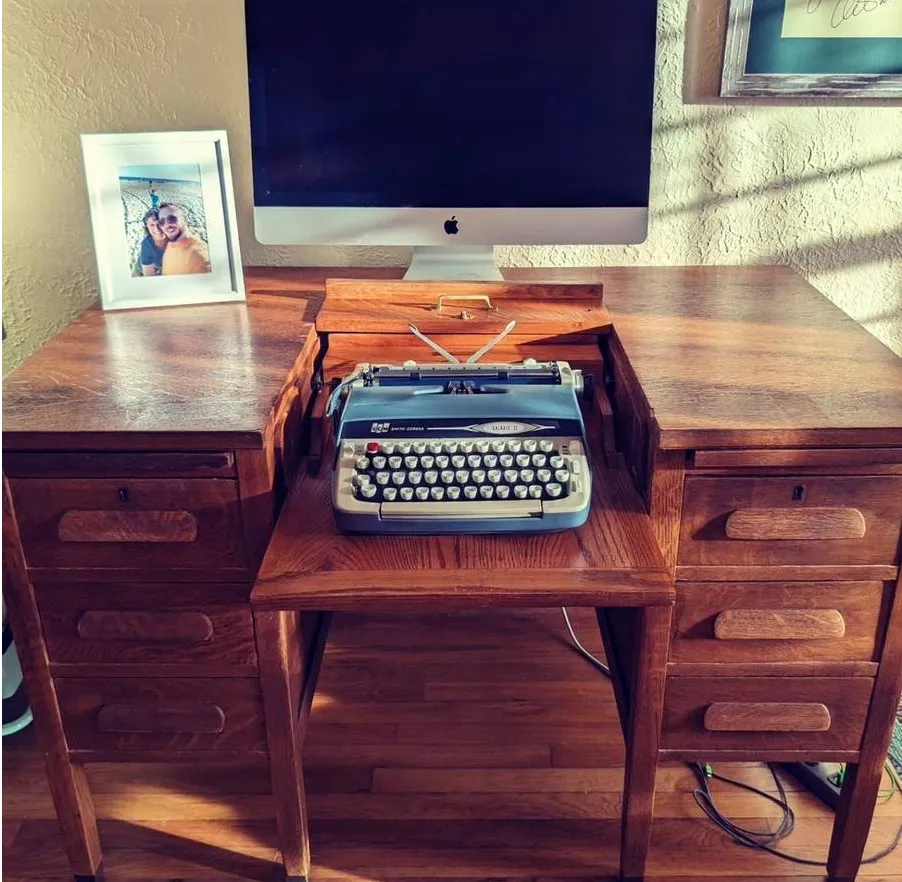Adjustment screw for the Olympia SM3 on feet shift set up is just to the side of the ribbon spool/cup. Gerren indicates that he's never been able to do this adjustment properly with the typewriter body on, so it's much easier to do with it off.
The bottom adjustment point (through the side of the frame) allows one to set the base line for the on foot for the lower case letters while the top one sets the upper case.
Gerren credits Phoenix Typewriter for most of the material he's learned in terms of fixing typewriters.
Bill at Philly Typewriter has an apprentice program, but there aren't many shops that do this. (Gerren makes a joke that it's free (child) labor.)
Trip point adjustments
The trip point is the point at which the typebar trips the movement of the escapement.
The adjustment point for it is reachable by removing the small protecting plate on the bottom at the back of the machine. The escapement trigger is just underneath it.
The lower one (top if the machine is upside down) is for the lower case; the top one is for the upper case.
Screwing the screw in will cause the trip to occur sooner.
Spacebar adjustment mechanisms [13:00]
There are two, one set in the front of the bottom of the typewriter and two screws in the back, right near the escapement.
If the spacebar is hit too many times while cleaning and repairing, the spacebar won't work properly and will need some minor adjustment when the body is put back on.
He shows at the end how to remove the keytops of the individual keys.
The final check is the shift lock mechanism to make sure its aligned properly.









